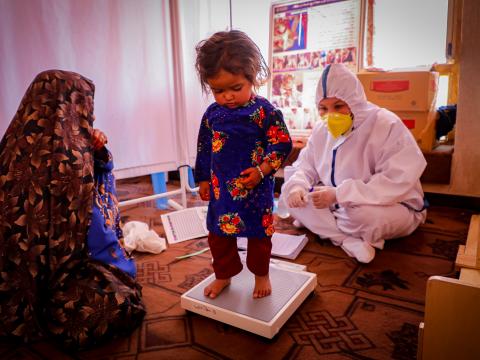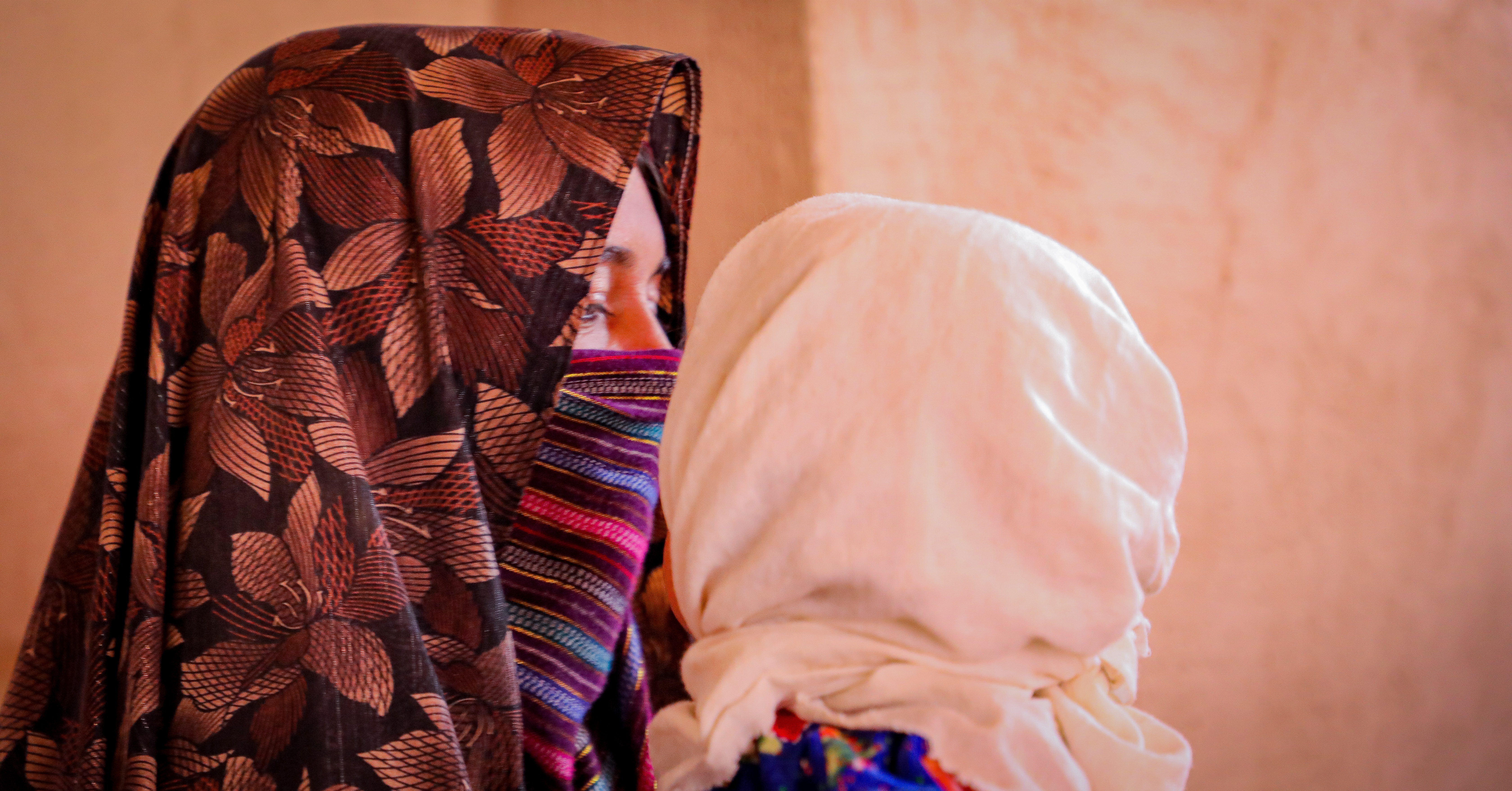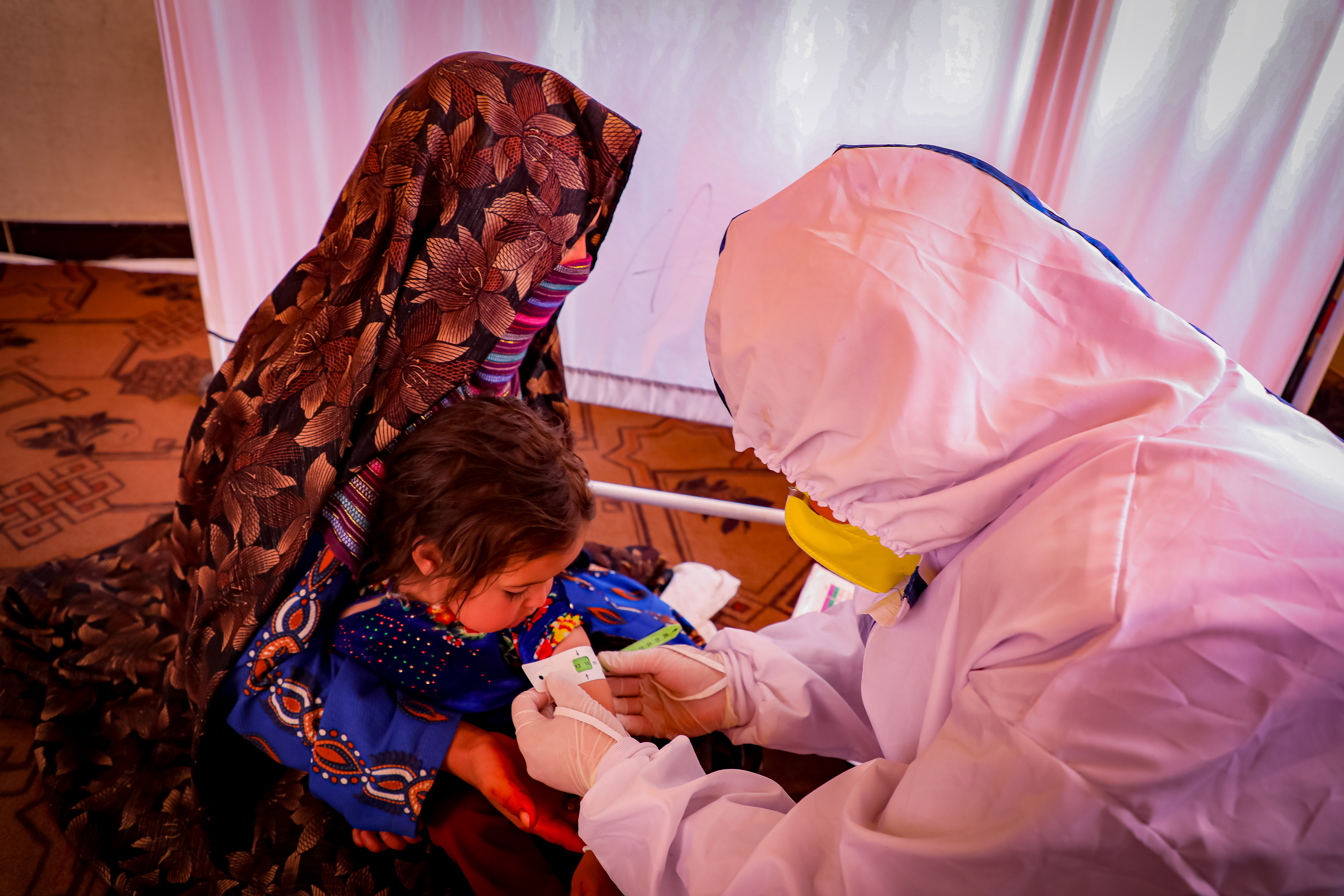Guldasta and the Shadow of War

Guldasta appears much older than her 23 years of age. Suffering is evident in her face and words. She lost her father at an early age, and her mother was left to bear all responsibility for the family, scratching out a living providing labor on farms, doing laundry and working domestically as her family’s situation worsened. Guldasta was expected to accept a proposal for marriage, as the promised bride price paid by her fiancé’s family would help her mother and sisters survive. She was only 11 years old.
She was just a child when she was married. “I did not understand anything about [relationships] and the [role of a wife], but for my family I had to accept this decision,” she says. “My mother was no longer able to work and feed us. [When I was alone] I often cried and feared the future. My husband was 10 years older than me. There were many people in my husband's family and I had to cook for everyone, wash their clothes, and do other things like milk the cows and clean the barn.”
At age 12, she gave birth to her first child, no longer able to attend school and forced to continuing to work in the home while pregnant. Delivery day brought nothing but anxiety. “The baby was very weak [when he was born] and I thought he was going to die. People said that he was born abnormal.” Guldasta was too young to produce breast milk so they had to use cow’s milk instead. “He was struggling with stomach problems,” she says, “So I mixed some water into the milk which at least stopped him from crying. He hadn’t turned one yet when I gave birth to my second child.” The first five years of marriage produced five children, three sons and two daughters. With more mouths to feed, more pressure was placed on already limited resources. Each of Guldasta’s children suffered from malnourishment.

A Window of Hope in The Storm
Civil conflict, as well as economic and food insecurity, drove Guldasta’s family from their home to the city of Ferozkoh, capital of Ghor province. She remembers the significant sacrifices required of her family: “When the war started, we had to leave all of our possessions in order to survive.” They landed in an Internally Displaced Peoples (IDP) settlement in the city, starting their new lives in a tent on the hard ground. Their living conditions have improved only marginally, as all six now live in a small mud hut with limited access to livelihoods opportunities and basic human resources.
For families such as Guldasta, World Vision Afghanistan (WVA) works to provide additional essential services for vulnerable families in temporary settlements across Afghanistan. Through this, communities can access basic services such as check-ups, nutritional and family planning information and necessary vaccines. In partnership with USAID’s Bureau for Humanitarian Assistance (BHA), WVA has established four Mobile Health and Nutrition Teams (MHNT) in Ghor Province to provide this basic medical assistance for communities affected by drought, conflict and other crises.
Guldasta’s children have received medical assistance from one of the teams nearby. Her youngest, Qamargul, was in particular need of help. As Guldasta explains, “Due to difficult conditions, food shortages, lack of breast milk, and not having money for cow’s milk, my last child was sicker and weaker than any of the others. She [didn’t have enough strength to] even sit on the ground.” They had lost all hope of Qamargul surviving into adolescence. When they heard from a neighbor that there was a clinic providing health services free of charge, they visited the World Vision’s mobile medical team and received the help they needed.
“I came to the clinic as soon as I heard about it,” she says. “The doctors took the height and weight of my child and determined that she was malnourished and needed a complete food [regimen]. After two months of treatment her health has improved.” Guldasta was also advised on proper day-to-day hygiene, which she carefully practices. After checkups, her other children were given vitamin and mineral supplements to take daily, which has improved the health of the whole family.

Where There’s a Will?
Guldasta, like her mother before her, has had to endure a great deal of hardship in her short life. As a result, she has decided to do whatever she can to avoid marrying off her daughters at an early age. She wants them to live without the trauma she experienced. But this means she’ll have to confront her husband and long held customs to prevent these practices. This is no easy task: “In our ethnic and tribal culture, the mother has no right to interfere in this matter,” she says, “But I will do my best to convince him. I had the hope of being literate person, but I will let my sons and my daughters to study. I wish one day I can see my elder daughter goes to university. ” Guldasta’s elder son and daughter are students at school.
For the time, Guldasta is left alone to care for her family. Her husband has left in search for work, and she receives little or no news from him. When she does meet neighbors and relatives about his well-being, they say only that he is alive. In the meantime, the weight of caring for her family has been placed solely on Guldasta’s shoulders – a heavy burden for such a young woman to carry alone. Guldasta does laundry and working in people houses for cleaning.
35% of girls in Afghanistan are married before the age of 18. While the issue is complex, it is understood that the driving factors for child marriage in Afghanistan are lack of access to education, displacement, traditional customs and attitudes and limited awareness of the long lasting negative effects of the practice. Dire external factors increase the pressure families feel internally to make ends meet. World Vision Afghanistan is committed to serving vulnerable communities in order to ease the pressures that force families to resort to drastic measures like child marriage while working with religious leaders as agents of positive social change. Support for this work is essential in a time of multiple crises where basic survival is often the only option.